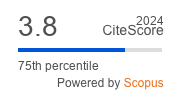Article | Open Access
Playing for the Future: Using Codesign Games to Explore Alternative Sanitation Systems in London
| Views: | 2804 | | | Downloads: | 1351 |
Abstract: Public participation is viewed as a best practice in planning, and yet most people who participate in it (planners included) often feel that it is a cynical box-ticking exercise. Citizen participation rates are usually low, implying that they may feel this way too. There are two good reasons for this feeling: On the one hand, public consultation often only occurs when it is a mandatory exercise required by government for development approval; on the other, when public consultation occurs it is after much time and effort has been invested by professionals to develop a scheme therefore change is made reluctantly or not at all. These factors create a reactionary and adversarial atmosphere during consultation. These structural limitations mean that there is no time to find alignment of interests between project developers and the public, or to develop trust and collaborations. This article explores how codesign games as a form of public participation can be done at an early stage of project development to contribute to finding alignment of interests and collaborations between project developers and different public interests. The empirical case study is focussed on the possibilities for the retrofit of sustainable sanitation systems in London. Three future sanitation systems were developed by 14 workshop participants. They demonstrate new alignments of interests, from methods of collection and treatment, to new economies of reuse and production. It also established reasons why the current water-based sanitation systems are obdurate, and the work involved in keeping the status quo.
Keywords: actor-network theory; codesign games; coevolution; London; public participation; sanitation
Published:
© Tse-Hui Teh. This is an open access article distributed under the terms of the Creative Commons Attribution 4.0 license (http://creativecommons.org/licenses/by/4.0), which permits any use, distribution, and reproduction of the work without further permission provided the original author(s) and source are credited.


